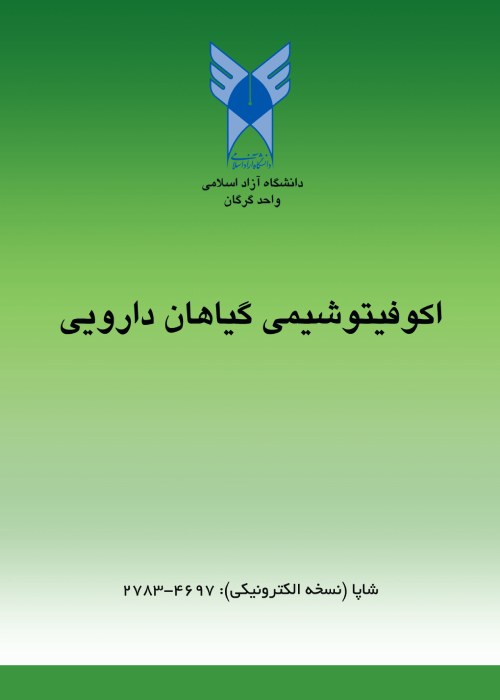Phytochemical changes of Dracocephalum moldavica L. Essential oil under different salinity stresses and application of humic and ascorbic acid
Salinity is one of the most important ecological stresses which reduces productivity. Humic acid as an organic acid and ascorbate as a strong antioxidant can be effective in improving plant yield under salinity stress.In this study, to investigate the effect of ascorbic acid and humic acid on the amount and chemical constituents of essential oil (Dracocephalum moldavica L.) under salinity stress, a factorial experiment in a completely randomized design with three replications was conducted at research greenhouse of faculty of Agriculture, Ferdowsi University of Mashhad, Iran. Treatments included salinity at four levels (0, 50, 100 and 150 mM), humic acid and ascorbic acid at three levels (0, 100 and 200 mg / l).The aerial parts of plant in blooming were collected and were extracted by steam distillation method using Clevenger apparatus and its components were separated and identified by gas chromatography and gas chromatography coupled to mass spectrometry. The essential oil content decreased with increasing salinity stress and application of salt stress moderators (ascorbic acid and humic acid) improved this trait. So that at 150 mM salinityit reached to the lowest level (0.2%) and application of 200 mg / l humic acid increased 51.61% of essential oil compared to control. Most of the essential oil constituents in control treatment (no use of moderators and no salinity conditions) were geranial (36.65%), neral (31.94%), geraniol (15.56%), geranyl acetate (0.66), Trans- 4,2- heptadienal (1/25%), linalool (1.09%), pulegone (0.95%) and verbenol (0.4%) which included 99.5% of the essential oil components respectively by 36.65, 31.94, 15.56, 11.66, 1.25, 1.09, 0.95 and 0.4 percent. In different levels of salinity stress with 100 mg/l of humic acid treatment and application of salt stress moderators (100 and 200 mg/l ascorbic acid and 200 mg/l of humic acid) a large number of combinations was observed compared to control treatment. These includedalpha-pinene, beta-pinene, camphene, camphor, alpha-thujone, nerol and thymol.
- حق عضویت دریافتی صرف حمایت از نشریات عضو و نگهداری، تکمیل و توسعه مگیران میشود.
- پرداخت حق اشتراک و دانلود مقالات اجازه بازنشر آن در سایر رسانههای چاپی و دیجیتال را به کاربر نمیدهد.



